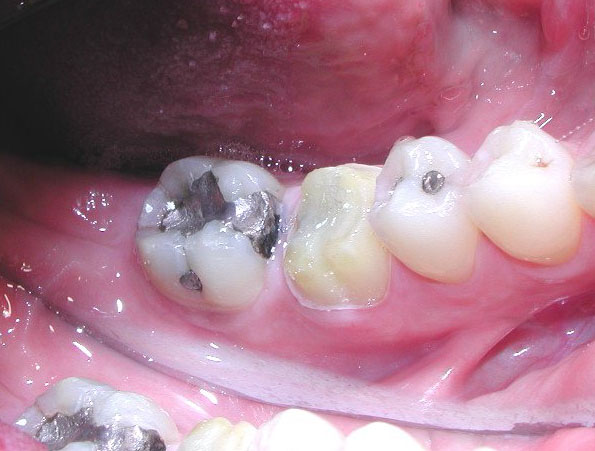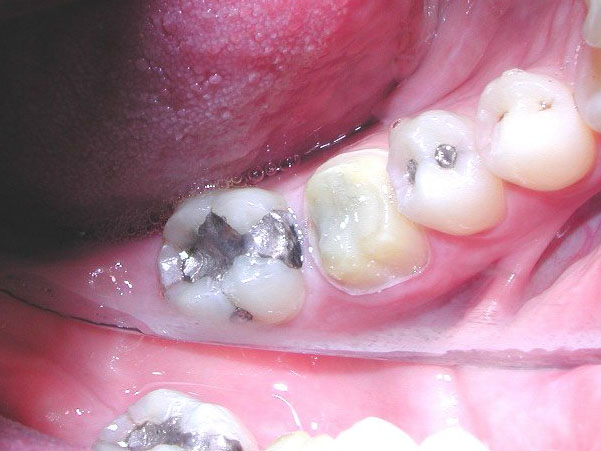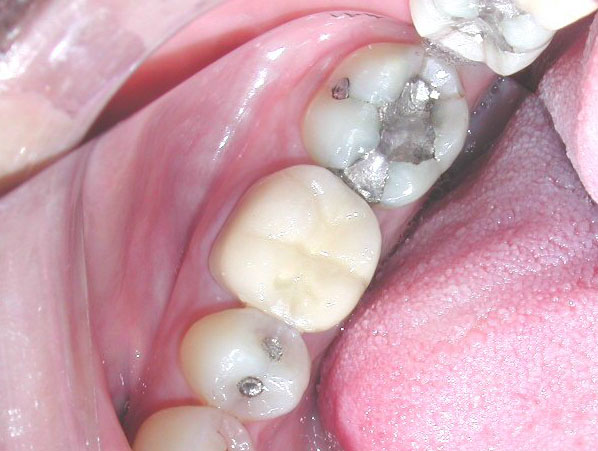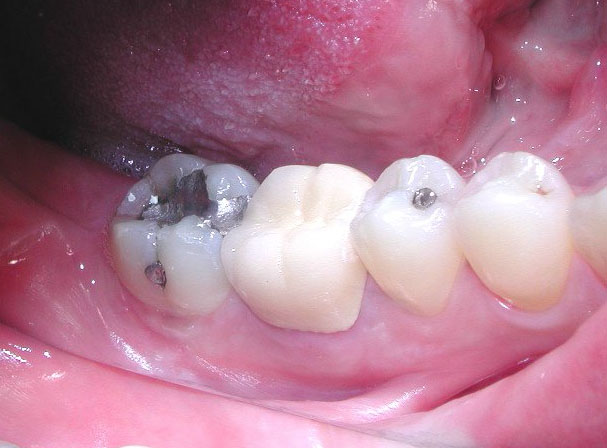Forum Replies Created
-
AuthorPosts
-
dkimmelSpectatorRon, Thanks for making a spot . Should turn into a great place to quickly find relevant article. Maybe we can get hack2 to post a few of his!!
I have used the wand with the laser for some TMD patients. Thought about it with the tongue. Pretty tough getting back in the posterior regions .
David
dkimmelSpectatorRon, Thanks for making a spot . Should turn into a great place to quickly find relevant article. Maybe we can get hack2 to post a few of his!!
I have used the wand with the laser for some TMD patients. Thought about it with the tongue. Pretty tough getting back in the posterior regions .
David
lagunabbSpectatorYou guys still bumping chests over this? Here is one just to stir the pot more for fun.
A more confined approached to energized water ablation induced by laser. Research conducted at:
<a href="http://ceres.ifs.tohoku.ac.jp/~swrc/
Application” target=”_blank”>http://ceres.ifs.tohoku.ac.jp/~swrc/
Application of laser-induced liquid jet and shock waves to medicine
Makoto Komatsu
Water vapor bubble is produced by energy absorption of water. And large energy supply for a extraordinary short time brings about formation of underwater shock waves. Energy source for these phenomena is laser emission, electric discharge, explosive and so on.
In SWRC, production of bubble and shock waves in water with laser irradiation has been studied. Laser which has wavelength close to light absorption spectrum of water have to be employed as effective energy source. Holmium YAG (Ho:YAG) laser beam has 2.1 ƒÝm wavelength, which is close to 1.9 ƒÝm of a light absorption spectrum of water. Therefore, Ho:YAG laser is suitable to generate bubbles and shock waves in materials including a large amount of water.
Living body has large including ration of water. Hence, behavior of bubbles and shock waves in living body is similar to that in water. Based on these backgrounds, development of medical technique with laser-induced liquid jet and shock waves has been conducted for application of this novel to medicine.
Laser-induced jet is produced by laser emission in narrow capillary tube. Fig. 1 explains the process of laser-induced liquid jet production. Optical fiber is inserted into a capillary tube filled with water. Laser beam transmitted via the fiber produces water vapor bubble growing toward the capillary exit, and then water is expelled from the exit by expanding bubble. Water flow generated by the emanation of water produces liquid jet finally. Development of fibrinolytic treatment for cerebral arteries and surgical knives with the laser-induced liquid jet has been performed with Department of Neurosurgery, Tohoku University Graduate School of Medicine.
AnonymousSpectatorJ Clin Laser Med Surg. 1999 Apr;17(2):69-75. Related Articles, Links
Dycal versus Nd:YAG laser and Vitrebond for direct pulp capping in permanent teeth.
Santucci PJ.
Center for Advanced Dental Education, St. Louis University, St. Louis, Missouri, USA.
PURPOSE: To determine the efficacy of laser-assisted direct pulp capping by comparing the survival rates of permanent teeth treated with Nd:YAG laser and Vitrebond (3M Corporation, St. Paul, MN) direct pulp caps to permanent teeth treated with the traditional calcium hydroxide direct pulp cap over intervals of up to 54 months. SUMMARY BACKGROUND DATA: While there are case reports and evaluations of various laser techniques in the literature, statistical studies comparing the success of laser-assisted applications to traditional techniques are needed. This is a retrospective investigation of one such laser assisted application. METHODS: A retrospective chart review of all active and inactive patients resulted in the identification of 83 patients who received direct pulp caps in a total of 93 permanent teeth; 29 with calcium hydroxide and 64 with Nd:YAG laser and Vitrebond. RESULTS: Life table analysis of the data of this retrospective study demonstrated that the teeth treated with the laser and Vitrebond direct pulp cap showed significantly greater survival rates than those treated with Dycal direct pulp cap over intervals of nine to 54 months postoperatively. The cumulative proportion of teeth surviving postoperatively for the Dycal (L.D. Caulk Corporation, Milford, CT) direct pulp cap was 89.7% at 1 month declining to 79.4% at 3 months and 76% at 6 months and then continued to decline in the final two intervals finishing after 54 months at 43.6%. For the laser and Vitrebond direct pulp cap the cumulative proportion surviving stood at 98.4% after 1 month, declining to 93.8% at 3 months and 90.3% after 6 months but then held steady in the final 2 intervals finishing at 90.3% after 54 months. CONCLUSION: The laser and Vitrebond direct pulp cap produces a significantly more predictable pulpal response after the first 6 months than the Dycal direct pulp cap. The survival rate of teeth treated with the laser and Vitrebond direct pulp cap is significantly greater than those treated with the Dycal direct pulp cap over intervals of 9 to 54 months. Direct pulp capping is a worthwhile procedure that should be performed when indicated, especially in light of the 90.3% survival rate achieved with the laser and Vitrebond direct pulp cap at 54 months.
PMID: 11189978 [PubMed – indexed for MEDLINE]
SwpmnSpectatorThat’s great, Dave. Glad the diode retraction went well.
Here’s the one week followup so we can see how the tissue healed on #30:




Al
SwpmnSpectatorConvissar, Robert(editor). The Dental Clinics of North America, October 2000: Lasers and Light Amplification in Dentistry.
Manni,” target=”_blank”>http://www.wbsaunders.comManni, Jeffrey G. Dental Applications of Advanced Lasers, April 2000. http://www.jgma-inc.com
These two books have been most helpful to me for a basic understanding of laser physics, delivery systems and oral interactions.
Al
AlbodmdSpectatorLooks like it healed up great Allen. Is that the case you showed me when I was at your office? You guys are making me want a diode now and I haven’t even received by Delight yet!
Al B
SwpmnSpectatorWalinski, Christopher. Waterlase Clinical Techniques. 2003. Cingulum New Media. http://www.nelaser.org/
Written by fellow “Townie” and Laser Dentistry Forum member Chris Walinski, this book has lots of specific techniques, tips and many color photos. Although the book is written specifically for the Biolase Waterlase 2780 nm erbium, in my opinion the techniques apply to both erbium wavelengths.
Al
Glenn van AsSpectatorAbsolutely awesome pics Allen……….looks great with respect to the healing and a very nice looking crown.
Way to go buddy…….
Nice nice stuff.
Glenn
Glenn van AsSpectatorHi Mark……..its been hectic and I am on the road to Toronto for a laser meeting next week so I wont be around again. I have lost a little energy for the posting because of being so busy.
I just finished the article for this months dentistry today on Scopes and now am starting to prepare for some more in Dentistry Today and in Oral HEalth for the fall.
I have a few cases to post but nothing earthshattering. Its been all crowns lately.
Well thanks for the kind words Mark and I will be in Vancouver and plan to attend some of the August meeting but wont be able to make it all.
I havent registered yet though but both Hoya and Global are asking me if I am going to the meeting and since I am supposed to do an article for Oral Health on microdentistry and the scope I guess I better go huh.
Lets do dinner when you get here but I am leaving for a cruise on August the 17th with my family which is the Sunday.
Hope all is going well and I look forward to posting a little more regularly as I get the time back.
Cya guys and thanks
Glenn
Glenn van AsSpectatorHi Albert…….my video is 2 years old and basically was a 17 minute lecture that was using the scope with the erbium and was from my beginning days.
If you wait until September 12-14th you will see much better stuff if you go to Vegas for the LVI meeting.
It should be an excellent meeting in my mind.
THere is a ton of information here on this site and in addition I am happy to help (time permitting ) at glennvanas@shaw.ca
Hope that helps.
Glenn
AlbodmdSpectatorDavid,
I read that article you were mentioned in, they had it on the biolase website. I was trying to figure out who it was. Can’t believe they didn’t mention your name, but at least you can reference being in the paper now.
Regards,
Al B
SwpmnSpectatorAlbert:
No, the retraction on the case I showed you was done with the DELight Er:YAG. Thanks for the comments. Now we need the Diagnodent laser, I think we got the cart before the horse.
Glenn:
Thanks, yeah I was pleased with the healing at one week. Patient said there was no discomfort.
Al
mickey franklSpectatorI recently got Dr.Walinskis book and lernt alot from it (as I had no other training due to Biolase not arranging anything for british buyers).The book together with much advise I keep getting from this forum(Ron,Glen,Mark,Al and all the rest) and some telephone help I got from Ron Kaminer Is great.
Thanks for your AMAZIG web forum
Mickey Frankl
London UK
dkimmelSpectatorRon, So smart you are! Used the wand with the Lasersmile. 5W 15 sec. continous. Results maybe be better then with the Waterlase. Bit tough in the posterior but much faster and no water.
We are on day 10 and it has almosted cleared up. In the past she would have been full blown and looking at a month to get to this point!
David(Edited by dkimmel at 11:41 am on June 27, 2003)
-
AuthorPosts
